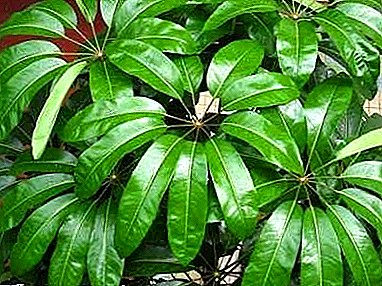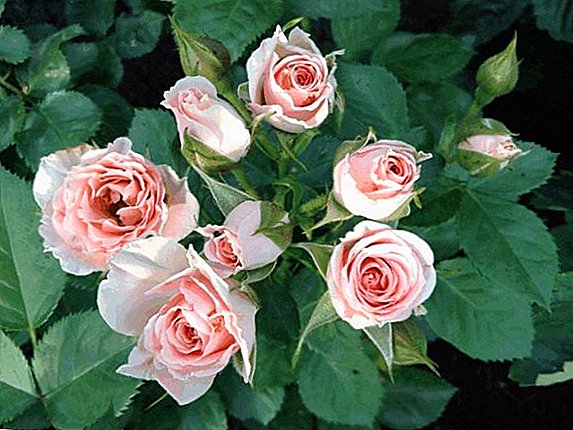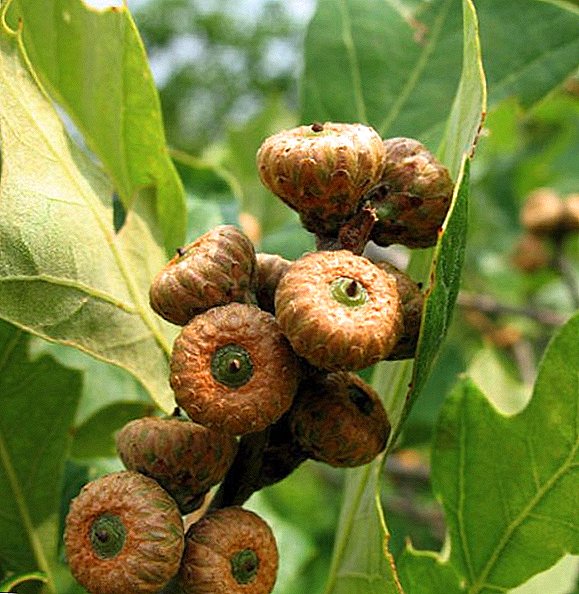 Oak is a representative of the family Beech. Found in the form of shrubs and trees. These huge luxurious giants are known to absolutely everyone. Even in ancient times, oak was a symbol of longevity and strength in many nations. This plant is found in most regions of the northern hemisphere, and some species also grow in the southern hemisphere. In this article we will describe in detail about some species of this beautiful and powerful plant.
Oak is a representative of the family Beech. Found in the form of shrubs and trees. These huge luxurious giants are known to absolutely everyone. Even in ancient times, oak was a symbol of longevity and strength in many nations. This plant is found in most regions of the northern hemisphere, and some species also grow in the southern hemisphere. In this article we will describe in detail about some species of this beautiful and powerful plant.
General characteristics of the genus
Oak has long been considered a symbol of wisdom and longevity because of its impressive longevity.
On average, representatives of the genus continue their life cycle for about 5 centuries, however, some representatives of the specimen on our planet since the baptism of Russia, that is, for more than a thousand years.
Read about the longevity of different trees.
The size of this plant is impressive for many: the height can vary from 20 to 45 meters or more, the diameter of the trunk at the foot - from 1 to 2 meters.  Members of the genus are deciduous plants. Some of them can be attributed to evergreen (the foliage falls every 2-4 years), the inhabitants of the temperate zone in most cases shed their foliage every year when the winter cold comes. Their trunk is covered with thick, wrinkled, slightly sinuous bark.
Members of the genus are deciduous plants. Some of them can be attributed to evergreen (the foliage falls every 2-4 years), the inhabitants of the temperate zone in most cases shed their foliage every year when the winter cold comes. Their trunk is covered with thick, wrinkled, slightly sinuous bark.
The structure of the leaves depends on the type of oak tree.: on can be toothed, paddle, pinworm, etc. The branches of the oak have a curved structure. This is explained by the fact that the oak is a very sun-loving plant, the branches of which always stretch towards the sun, and when the seasons change, the shoots change direction in growth.
The root system of these powerful plants is well developed and goes deep into the ground.. The crown of a tree usually has a spherical shape, but much depends on the place of growth. Oaks that grow in the forest have a narrow crown elongated vertically.
Did you know? In France, there is an oak tree, inside the trunk of which there is a small room with a diameter of 3.5 meters. According to conservative estimates, the age of the French legend is more than 2 thousand years.
If such a plant is found alone in the middle of a wasteland, then with a high degree of probability its crown will be very broad and spherical (diameter will be measured in tens of meters).
Sometimes the crown may have a completely irregular shape. This happens when the plant grows in extreme conditions: with a constant lack of humidity, frequent strong winds, etc.  Flowering oak begins in late spring. The flowers are male and female, but they are all small and green in color. Male flowers are always collected in small inflorescences that resemble earrings, female ones are like small grains. It is from female flowers in the future that fruits are formed - acorns.
Flowering oak begins in late spring. The flowers are male and female, but they are all small and green in color. Male flowers are always collected in small inflorescences that resemble earrings, female ones are like small grains. It is from female flowers in the future that fruits are formed - acorns.
We recommend to read how to grow the fruits of oak near the house, and also learn how to use acorns for coffee.
Types of Mediterranean Oaks, Canada, Southern Europe
This genus includes about 600 species of plants. Some of them grow in the temperate and subtropical zones of the southern part of Europe and the Mediterranean.
Stone
This type of oak plant has a large number of decorative forms, which differ in the structure and color of the leaves. The plant is unpretentious to weather conditions and soil type.
With no problems withstand temperature changes, too wet or dry soil, the environmental conditions of large cities.  Stone oak is evergreen and in the wild reaches a height of 25-35 meters. It has a smooth gray bark and a thick crown. Leaf length varies from 25 to 75 mm. From above they have a glossy finish.
Stone oak is evergreen and in the wild reaches a height of 25-35 meters. It has a smooth gray bark and a thick crown. Leaf length varies from 25 to 75 mm. From above they have a glossy finish.
Three types of leaves are most common.:
- oval;
- elliptical;
- broadly lanceolate.
 The tree grows very quickly and in 60-70 years reaches its maximum height. Often used for decorative purposes for landscaping parks, estates, hedges and alleys.
The tree grows very quickly and in 60-70 years reaches its maximum height. Often used for decorative purposes for landscaping parks, estates, hedges and alleys.Different types of hawthorn, barberries and yellow acacia (caragana) are perfect for high hedges, if you want to create a low green curb - plant Kuril tea (cinquefoil), Thunberg barberry or low spirea species (Japanese, Bumald).
Red
This type of oak is also called northern, as it is most often found in Canada - the most northern country of the American continent..
This representative of the genus prefers to grow in deciduous forests or along rivers and lakes (but only on moderately dry soils).
The plant can reach 25 meters in height, the width of the crown at the same time varies from 5 to 15 meters.
Leaf characteristics:
- thin and shiny;
- have a characteristic red-claret color (autumn) and dark green - in summer;
- leaf length is about 15-20 cm, width - 8-12 cm.
 Red oak has a high level of frost and drought tolerance. It is practically not damaged by diseases and pests, it is immune to powdery mildew.
Red oak has a high level of frost and drought tolerance. It is practically not damaged by diseases and pests, it is immune to powdery mildew.It is not picky about the composition of the soil, so it can be planted in almost any places (for decorative purposes - for gardening gardens, parks, avenues, street sidewalks).
The decorative subspecies has beautiful golden-sunny foliage, which increasingly attracts owners of private parks and gardens.
Read more about growing red oak.
Suberic
In the wild, it is found in the western part of the Mediterranean. Distributed in the forests of France, Spain and Portugal. It tolerates a hot climate and dry soil, is rarely found near the coast of rivers on wet soil types.
Cork oak has a well-branched root system, reaches a height of 25-30 meters, has a moderately dense spherical crown. It is practically not used for decorative purposes in the northern part of Europe and America, since it completely freezes out at a temperature of -22 ° C.
Its leaves are oval in shape, covered with a whitish pubescence from below. Painted in gray-green color.  The plant has a thick bark that protects the trunk from the scorching sun of the Mediterranean countries. The bark of cork oak is widely used for technical purposes. It is used to make parquet, bottle cap, shoe soles, etc.
The plant has a thick bark that protects the trunk from the scorching sun of the Mediterranean countries. The bark of cork oak is widely used for technical purposes. It is used to make parquet, bottle cap, shoe soles, etc.
Rocky
This representative of the Beech family is distributed almost throughout Europe.. However, it is most often found in mountainous and rocky areas of such countries:
- France;
- Italy;
- Spain;
- Portugal;
- Andorra.
Unlike cork oak, rocky is able to withstand the strong winter frosts of Denmark, Sweden and Norway, so it is also regularly found in these countries. This plant became the most popular in Wales, where it is one of the national symbols (it is also called Wales oak).
Rock oak has a marquee crown, its height from the foot reaches 30-40 meters. Botanical data states that this plant is practically not rooted in mountainous and rocky areas (from 0.1 m to 3 m). However, on well-drained forest soil, taproot can be buried 30-35 meters deep.  The leaves have a bright green color and an irregular paddle structure, reaching a length of 12 cm. The leaves have a wedge-shaped or rounded base, on the sides - 5-7 unequal uneven lobes. This plant has a decorative value due to its leathery beautiful leaves.
The leaves have a bright green color and an irregular paddle structure, reaching a length of 12 cm. The leaves have a wedge-shaped or rounded base, on the sides - 5-7 unequal uneven lobes. This plant has a decorative value due to its leathery beautiful leaves.
Oaks of North America
In the wild nature of North America grows more than 250 species of plants of this genus. This continent has the greatest variety of oaks, most of which, oddly enough, grow in Mexico.
White
The plant in the natural habitat is found in the eastern United States and Mexico. White oak adorns the parks and alleys of many European countries, including Ukraine, Russia and Moldova. It has poor frost resistance (in St. Petersburg during the winter period without proper shelter it freezes hard).  Loves rich in mineral and organic matter soils. Relatively favorably tolerates summer heat with minimal rainfall.
Loves rich in mineral and organic matter soils. Relatively favorably tolerates summer heat with minimal rainfall.
Did you know? Previously, the board for warships created from virgin oak. It is known that even cannonballs fired at high speed bounced off such boards.
The plant has a powerful, dense, thick trunk, which is covered with light gray bark. At the age of 40-50 years it reaches a height of 30 m, it grows quite quickly (if compared with other members of the genus).
It has dark green leaves in summer and purple-purple or maroon-red leaves in autumn. The leaves have an oblong-oval structure. Their length is 12-20 cm, width - 7-10 cm.
Large-fruited
Distributed in many regions of North America. The plant does not tolerate severe frosts, but prefers moist moderately rich soil. It is actively used in decorative and landscape design in the form of tapeworms and group plantings.  Large oak grows quickly and reaches a height of 30-35 meters. It has a sprawling moderately dense crown. The leaves are green in the summertime, in the fall they become reddish. They have an obovate structure, reach a length of 25 cm.
Large oak grows quickly and reaches a height of 30-35 meters. It has a sprawling moderately dense crown. The leaves are green in the summertime, in the fall they become reddish. They have an obovate structure, reach a length of 25 cm.
Marshland
Widely distributed in the eastern part of the United States, where it grows near the banks of rivers, on the outskirts of roads (like moist soil). Tree slender, grows up to 25 m in height. The crown of the pyramidal structure, the projection diameter of which varies from 10 to 15 m. The bark remains smooth for a long time, is colored greenish-gray.
The leaves are relatively small (up to 12 cm), have 5-7 cuts almost to the middle. Bottom covered with whitish pubescence. In the autumn period, acquire a bright purple hue. Swamp oak has sessile acorns that do not exceed 15 mm in diameter. 
Willowy
Homeland is the eastern states of the United States. The tree has a beautiful decorative appearance, it has a slender trunk and a small height (on average - up to 20 m). The crown has a wide-round structure, but in youth it remains narrow pyramidal.
The stork is covered with beautiful foliage, which has the following characteristics.:
- about 12 cm long and no more than 3 cm wide;
- the leaves are very similar to willow, which was the reason for the name of the plant;
- dull, from the bottom have a small whitish pubescence.
 The softwood oak loves an increased amount of sunlight, prefers moderately moist soils, to whose composition it is not particularly demanding. Maintains frosts to -23 ° C. In mass culture and decorative design used since 1680.
The softwood oak loves an increased amount of sunlight, prefers moderately moist soils, to whose composition it is not particularly demanding. Maintains frosts to -23 ° C. In mass culture and decorative design used since 1680.We advise you to read about the 12-ke beautifully flowering and deciduous trees.
Crescent
Sickle oak grows in the wet forests of the United States. It has good frost resistance, likes an increased amount of sunlight. The flowering period falls on May. In the decorative culture is extremely rare.
The tree grows 20-25 meters tall. It has an ovate or rounded crown, brownish shoots, dark red bark.
It got its name because of the structure of the leaves, which are characterized by a sickle shape at the edges. The leaves reach a length of 20 cm, width - up to 12 cm, wedge-shaped at the base and with a sharp tip.
Acorns are collected in groups, have sharp tips. 
Lyrate
Widely distributed in the southern and central regions of the United States. It withstands temperatures down to -30 ° C, which is why it is actively grown in northern countries to decorate parks and alei. It grows up to 30 m in height, has a dense spherical crown.
Old branches are gray, young shoots are greenish-gray with small whitish pubescence. Leaf sizes are the same as for crescent oak. They have an obovate structure, lyrate, lobed at the edges.
Important! When growing lyre oak for decorative purposes, winter insulation is not required. In addition, the composition of the soil also does not matter much.
The flowering period of lyre oak coincides with the moment of leaf blooming (April - May). Fruits fully ripen only in September. The plant prefers moist soils and well-lit terrain. 
Velvety
In the northern regions of the United States and Canada, velvety oak does not reach a height of more than 25 m, but in the southern regions the plant looks more powerful and reaches an average height of 42 m. The bark is borosenchata, inside is yellow, the outside is dark brown or black.
The leaves have an obovate structure, not more than 18 cm long. The crown is broad-pyramidal, moderately dense. Acorns are not more than once every 2 years.
The indigenous peoples of North America have long used velvety oak bark to treat such diseases:
- dysentery;
- fever;
- ulcerative lesions of the oral cavity;
- pathologies of the digestive system.
 In addition, the bark of this plant species has an increased amount of tannins, which is why it is actively used as a tool for tanning leather.
In addition, the bark of this plant species has an increased amount of tannins, which is why it is actively used as a tool for tanning leather.Read also how oak bark is used in traditional medicine recipes.
Oak species in Russia, East Asia, the Caucasus, Siberia and the Crimea
English oak is most common in Russia, Ukraine, the Caucasus and East Asia. Recently, he was introduced to the territory of North America. But in addition to pedunculate oak, Eastern Europe and the Caucasus are rich in other plant species from this genus.
Mongolian
This beautiful plant got its name because of the country in which it was first described. Today in Mongolia, this type of oak is practically not found. However, it is widespread in China, Japan, Korea and eastern Russia. It grows predominantly in mountain rocky forests, where it quickly forms soil under itself.  In the wild, under favorable conditions, it reaches a height of 30 m. Mongolian oak grows very slowly, which is largely due to the climate in its habitat. It tolerates strong frosts and gusty winds, but tends to receive a large amount of sunlight.
In the wild, under favorable conditions, it reaches a height of 30 m. Mongolian oak grows very slowly, which is largely due to the climate in its habitat. It tolerates strong frosts and gusty winds, but tends to receive a large amount of sunlight.
This plant sometimes has the form of a shrub with dark brown shoots. Its leaves are dense, obovate, with 7-12 lobes.
Krupnopylnikovy
This type of deciduous tree reaches a height of no more than 20 meters. Distributed in the Caucasus, Turkey, Iran, Syria and some other Asian countries. Forms forests on the southern slopes of the mountains at an altitude of 800 meters or more. Differs in the increased drought resistance.
Did you know? The Slavs dedicated an oak tree to a pagan god Perun. Because of this, in Russia, the oak tree was called the Perunovo tree.
Krupnopylnikovy oak has a thick cracked bark, thick greyish yellow hair can be seen on the shoots. The leaves are dense, back-oval structure, up to 18 cm long. At the base are wedge-shaped, have large-toothed lobes on the sides. 
Chestnut leaf
Widely distributed in Ukraine, the North Caucasus and the south of Central Asia. One of the few species of oak that prefer shady places, but remain drought resistant. In the wild, it grows in deciduous forests of mountainous areas.
General characteristics of chestnut oak:
- good frost resistance;
- life expectancy is 350 years;
- unpretentiousness to the soil composition;
- not prone to powdery mildew.
The height of this tree reaches 45 meters, while the diameter of the trunk at the foot, on average, is 1.6 meters. It has a tent crown and a grayish thick bark. The leaves are very similar to the leaves of a chestnut seed.  They have an oblong-elliptical structure with triangular sharp teeth along the edges. The length of the foliage varies from 10 to 18 cm, width - from 7 to 11 cm. The color in the summertime is dark green, in the fall it is brownish-red.
They have an oblong-elliptical structure with triangular sharp teeth along the edges. The length of the foliage varies from 10 to 18 cm, width - from 7 to 11 cm. The color in the summertime is dark green, in the fall it is brownish-red.
Pedunculate
One of the most famous species of this genus. It occurs almost throughout Europe, as well as in western Asia and in North Africa (Algeria, Tunisia). Demanding on the composition of the soil (prefers black soil and forest loam).
The plant is quite thermophilic, does not tolerate late spring frosts of the northern regions of Europe, because of what sometimes freezes (small trees can freeze completely). It grows in deciduous and coniferous forests, along ravines, beams, river banks. It is found in the mountainous deciduous forests of the Carpathians.
Pedunculate oak is a very powerful and strong tree, which grows up to 40 m in height. The duration of its life depends on climatic and soil conditions (some representatives live up to 600 years and more).
Read more about the characteristics of the cultivation of pedunculate oak.
Growth in height continues until about 200 years of age, the trunk grows in width throughout life. The root system consists of one powerful long stem and 6-8 main lateral roots. Crohn-shaped, asymmetric, spreading crown.  The leaves are oblong, heart-shaped, peristolopastny, up to 15 cm in length and 7-9 cm in width.
The leaves are oblong, heart-shaped, peristolopastny, up to 15 cm in length and 7-9 cm in width.
Fluffy
The most widely distributed in the Crimea and Asia Minor. It grows on lime-bearing rocks, in deciduous forests and on the southern slopes of the mountains.
The plant is light-loving, while tolerating a long drought and severe frosts.
Relatively low tree, when compared with other members of the genus (up to 18 m). Крона широкая, умеренно-густая.
На побегах имеется густое мелкое опушение. Пушистый дуб часто встречается в виде кустарника, особенно в горных районах Крыма.
Листья очень изменчивы по форме и достигают длины не более 10 см. 
Зубчатый
Встречается в южных регионах России, в КНР и Корее. Listed in the Red Book of the Sakhalin Region and Primorsky Krai. Protected by the threat of extinction since 1978.
The plant has a high decorative value and is found in 14 different botanical gardens in Russia.
Short-toothed oak (from 5 to 8 meters in height), while the diameter of its trunk does not exceed 30 cm.
Important! Due to massive deforestation and frequent fires, dentate oak was on the verge of extinction, which is why it was listed in the Red Book of Russia. Introduced special rules for the protection of the species and the increase in the number of plants in certain regions.
The tree is fast-growing, has ribbed shoots with thick yellow pubescence. Leaves dense, narrowed at the base, 8-13 lobes on the sides.
The flowering period begins in May-June, the fruits ripen in September-October. 
Pontic
In the natural habitat is found on the territory of the Caucasus and northeastern Turkey. In most cases, forms a shrub with a very wide crown.
In the form of a tree does not reach a height of more than 6 meters. It has large obovate leaves up to 25 cm in length and 13 cm in width.
Shoots do not contain pubescence and differ in a reddish-brown color.
Did you know? Statistics say that only one acorn out of ten thousand germinates and becomes a full-fledged tree.
Due to its low height, Pontic Oak is a very valuable specimen in decorative art.
It is often planted for landscaping parks, alleys, private gardens. In general, Pontic Oak is quite frost-resistant (withstands temperatures down to -29 ° C), however, young shoots can freeze even in the southern regions of the middle zone. 
How to determine the type of oak by its foliage
Since there are more than two hundred different species of oak in nature, sometimes the process of identifying a particular species can put you in a dead end. To reliably determine the view, you should use our step-by-step instruction:
- According to one of the classifications, all members of the genus are divided into two categories: white and red oaks. Definition of the category will immediately reduce the number of possible options at least one and a half times. White oak has rounded tips of leaves, red - sharp.
- DAll possible options should be selected, depending on their geographic location.. For example, you can hardly find lyre oak in central Russia, since it is often found only in North America. To select all possible options you should use the directory.
- Collect a few leaves and calculate the average number of shares.
- Examine the shape and length of the grooves between the lobes of the leaves.
- See how the color of leaves changes in the autumn. Some oak varieties change color to golden, some to red, and evergreens do not change color at all for 2-3 years.
- Measure the average length of the leaves, while taking a sample of at least 10 copies. For different species of the genus, the average leaf length will be different.
 Now you know what types of oak are most common in a particular geographic region and how to distinguish their varieties. The information given in this article will be useful to any forester, botanist, and ordinary person who loves nature walks.
Now you know what types of oak are most common in a particular geographic region and how to distinguish their varieties. The information given in this article will be useful to any forester, botanist, and ordinary person who loves nature walks.In your plot you can plant both deciduous trees: maple, chestnut, alder, poplar, elm or linden, and coniferous plants - fir, juniper, larch, pine, yew or pseudo-hull.
When planting oak in the park or on the outskirts of the alleys, the geographical features of the region should be taken into account, since each plant species differs in individual features (requirements for soil composition, differs in terms of frost resistance and drought resistance, requirements for lighting, etc.).












